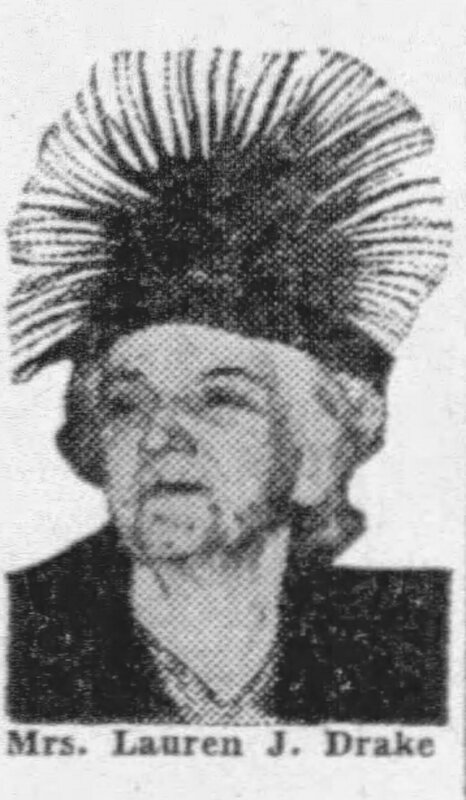Introduction

Above: Kil-so-quah (a cousin of Rebecca Hackley) with her son Anthony Revarre Jr., near Wabash, IN (1910).

Above: Edith Love from Chicago Tribune, July 7, 1946.
Every project brings surprises. Sometimes it is a wealth of information opening up an individual's world. Other times it is just a tip that sparks more questions and leads in new directions. Periodically it is the absence of information that leaving the historian wondering: "What next?"
This semester there have been surprises in all six biographical projects. Finding so many names identifying Muncie's female glass workers is a thrill. Seeing women in a familiar photograph newly integrated into the city reaffirms the importance of historical research. Not knowing what happened to Ida Rickman in the years following her arrest, reminds us that not everyone's life is equally documented. While participation in fraternal organizations is a choice, people with lower incomes, education, and unregulated employment are less likely to leave a substantial trail of documents. In contrast, a wealthy woman's divorce is sure to appear in the newspapers. Evern though Edith Love and Jauren Jay Drake had been married for forty years, the Chicago newspapers printed every detail of her alimony settlement. Resources lead to records, which tilts the historical focus towards people already well endowed.
In an effort to preserve part of Muncie's indigenous past, the city's Daughters of the Revolution chapter erected monuments at sites along the White River. Their choices reflected their interest in preserving a particular narrative that aligned with their institutional goals. They did not seek out living indigenous women, but sought a model of indigenous America that was safely in the distant past. Where DAR members had some agency in crafting their historical narrative, other women have been less successful. Mrs. Mattie McGuire, proprietor of the Swiss Cottage boarding house, seems to be at the mercy of the newspapers. Our knowledge of her career and experiences depend on reports of near disasters offset by glowing advertisements. It is hard to see everyday life between the two types of accounts. By virtue of an absence of documents, Donatila Azacoya Lizarraga, the mother of an early Latino migrant to Muncie, had little impact on how historians shape her narrative. Undoubtedly, there were many mothers and wives who sent men to Muncie for work and school, but few have left personal narratives. This is a challenge, but also an opportunity.
To see how historians have grappled with these diverse situations, read on. Each page profiles a single woman or a group of women through evidence-based research. Watch the biography video to discover more about these lives, and then watch the methodology video to discover how this knowledge came to light. Muncie hosted a great diversity of women, who worked, loved, and were remembered long after they passed, especially through histories like these.
